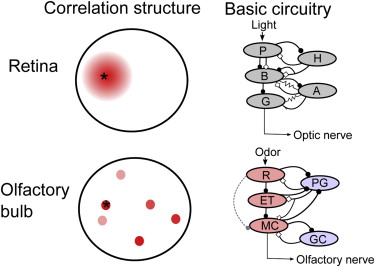Neurobiology has long held the belief that a single neuron releases only one type of neurotransmitter, which is crucial for inter-neuronal communication. However, recent research has shown that some neurons can release multiple neurotransmitters simultaneously, a phenomenon known as co-transmission. The significance of co-transmission in the dynamic regulation of neural circuits is becoming increasingly recognized. Despite this, the precise impact of co-transmission on target neuron firing and overall animal behavior remains unclear.
To shed light on this, a recent study led by Dr. Benjamin Arenkiel, a professor at Baylor College of Medicine and principal investigator at the Jan and Dan Duncan Neurological Research Institute (Duncan NRI), investigated the co-transmission of two neurotransmitters—gamma-aminobutyric acid (GABA) and dopamine—in a specific group of olfactory bulb neurons. The team aimed to understand how this co-transmission modulates the activity of the entire circuit and affects odor detection and discrimination. The study findings were published in Cell Reports.
Both GABA and dopamine are present in many brain cells and are co-transmitted. The researchers focused on a type of olfactory inhibitory neuron called superficial short axon cells (sSACs), which receive inputs from various olfactory sensory neurons. By blocking the release of GABA or dopamine from these neurons using a genetic technique in mice, the team assessed the role of sSACs in odor detection and discrimination.
The results of their behavioral assay, which relied on the innate ability of mice to detect hidden food, revealed that mice lacking both GABA and dopamine were unable to detect odors. In contrast, inhibiting either neurotransmitter individually did not impair odor detection. However, mice in which the release of either GABA or dopamine was blocked struggled to differentiate between pairs of similar odors that normal mice easily distinguished.
Based on these observations, the researchers concluded that while both GABA and dopamine are individually sufficient for odor detection, they likely work cooperatively to discriminate similar odors. The sSACs receive inputs from olfactory sensory neurons, transmit these signals to tufted cells and mitral cells (the primary output neurons), and ultimately synapse with granule cell neurons in the deepest layer of the olfactory bulb. This makes sSACs a crucial part of the initial circuitry involved in detecting, decoding, and processing olfactory information from the external environment.
To further understand the neural circuits and mechanisms underlying odor detection and discrimination, the researchers aimed to identify the targets of GABA and dopamine in sSACs. Their investigation revealed the presence of GABA and D1 dopamine receptors throughout the olfactory bulb, including on both known and new targets of sSACs involved in odor detection.
Using Channelrhodopsin-assisted circuit mapping (CRACM), the researchers discovered that while sSACs are connected to external tufted cells via both GABA and dopamine receptors, they only release dopamine to granule cells. Additionally, impaired release of sSAC GABA or dopamine affected the firing frequency of mitral cells, resulting in an increased number of glomeruli responding to a specific odor and reduced odor discrimination.
The study provides crucial mechanistic insights into co-transmission, particularly in the context of olfaction. It demonstrates how this type of neuromodulation shapes distinct responses to sensory stimuli by differentially modulating different target neurons. As co-transmission occurs in various brain cell types, this research serves as a foundation for further studies on the neuromodulatory effects of multiple neurotransmitters in olfaction and other sensory processes.
In summary, the study elucidates the role of co-transmission of GABA and dopamine in the detection and discrimination of odors. It uncovers the impact of these neurotransmitters on target neuron firing and provides valuable insights into the neural circuits involved in olfaction. The findings contribute to our understanding of co-transmission as a powerful mechanism in the regulation of neural circuits and its implications for sensory processes.
*Note:
1. Source: Coherent Market Insights, Public sources, Desk research
2. We have leveraged AI tools to mine information and compile it




